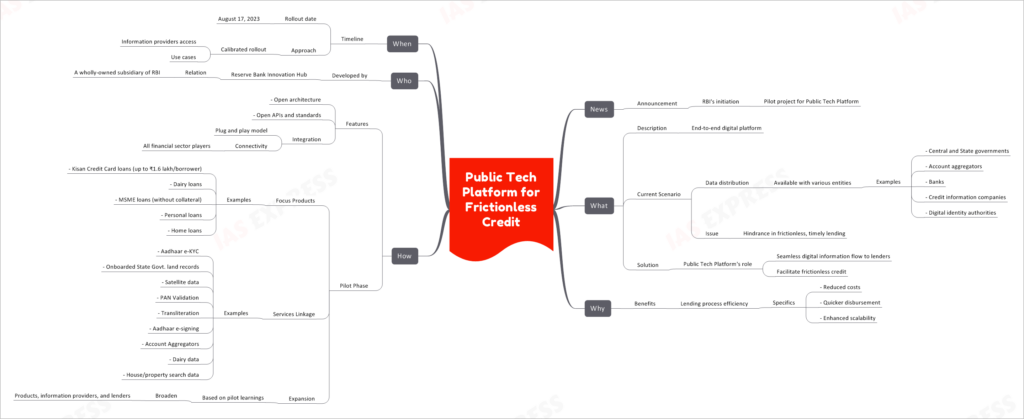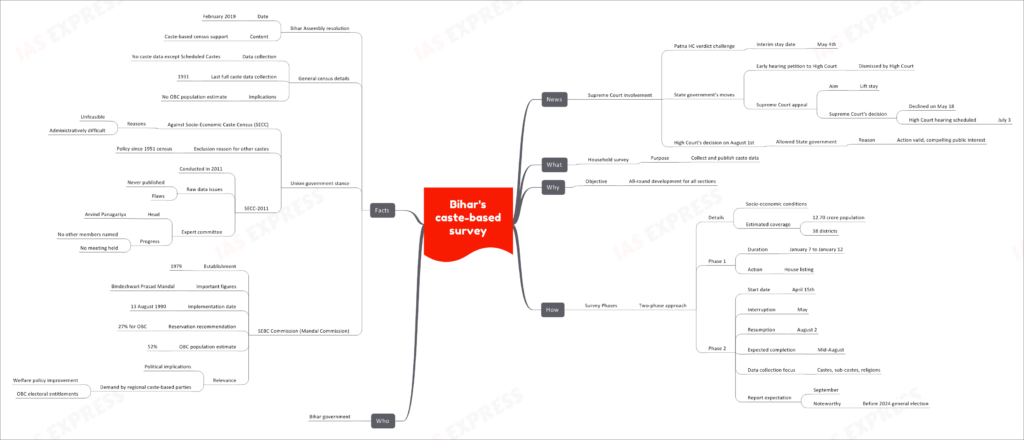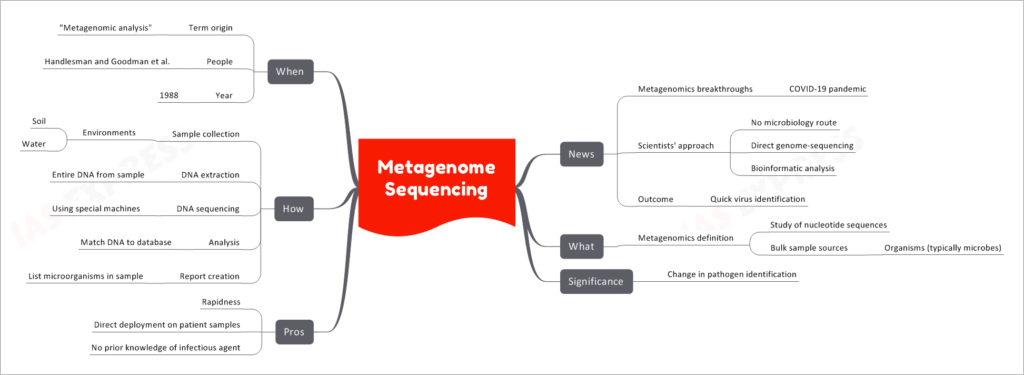[Newsbits] 15.08.2023

Cloudburst
Recent news from Himachal Pradesh highlights the occurrence of a cloudburst, drawing attention to this meteorological phenomenon that can have significant impacts in various regions.
Defining a Cloudburst: Beyond Ordinary Rainfall
A cloudburst is characterized by a sudden and intense bout of localized rainfall. It's essential to note that not all instances of heavy rainfall qualify as cloudbursts. The criteria for classifying a rain event as a cloudburst include:
- Rainfall of 10 cm or more within a single hour.
- Coverage across an area of at least 10 km x 10 km.
- In some cases, even 5 cm of rain within 30 minutes can be categorized as a cloudburst.
Contextualizing Cloudbursts in India's Rainfall Patterns
In the context of Indian rainfall, which averages around 116 cm across the country in a normal year, cloudbursts stand out due to their intensity and localized nature. To put this in perspective, if the annual average rainfall were evenly spread, it would accumulate to a height of 116 cm. However, geographical variations lead to some areas receiving rainfall that's as much as 10 times the annual average, underscoring the diversity of India's precipitation patterns.
The Significance of Cloudbursts: A Sudden Onslaught of Rain
The impact of a cloudburst is substantial, with about 10% of the annual rainfall occurring within just one hour during these events. To draw a comparison, the infamous Mumbai cloudburst of July 26, 2005, witnessed an extreme instance of rainfall with 94 cm of rain in 24 hours. This resulted in over 400 fatalities and economic losses exceeding USD 1 billion.
Locations Prone to Cloudbursts: A Focus on Hilly Regions
Cloudbursts tend to occur in hilly regions and states along the Himalayas due to a combination of factors. Local topology, wind systems, and temperature gradients between the lower and upper atmosphere contribute to the conditions that can trigger these intense rain events.
When Cloudbursts Strike: The Frequency and Timing
While not uncommon, cloudbursts are especially prevalent during the monsoon months. These intense bursts of rainfall can disrupt normal life, cause flash floods, and trigger landslides in hilly terrain.
Matangini Hazra
Recent news pays homage to the valiant women freedom fighters, acknowledging their immense contributions to India's struggle for independence. Among these extraordinary individuals, Matangini Hazra stands out as an emblem of courage, resilience, and unwavering dedication to the cause of freedom.
Matangini Hazra: The Unconventional Revolutionary
Matangini Hazra was a revolutionary figure who defied societal norms and circumstances. Born into a poor farming family in Hogla, near Tamluk, West Bengal, she embarked on a path of resistance and activism that would leave an indelible mark on history.
A Life of Struggles: From Early Marriage to Early Widowhood
Matangini's life began with hardships as she faced early marriage at the tender age of 12 to Trilochan Hazra, a 60-year-old from Alinan village in Medinipur. Widowed by the age of 18 and childless, Matangini's life journey was one marked by trials and tribulations.
Code Name God and Her Affection for Gandhi
Matangini's deep admiration for Mahatma Gandhi earned her the moniker "Gandhiburi," signifying an old Gandhian woman. Despite her love for Gandhi, her involvement in the freedom struggle from 1905 was marked by unwavering courage and activism.
Significant Contributions to the Freedom Struggle
Matangini's activism became particularly significant during the Non-Cooperation Movement in 1932. Her arrest during the Salt Satyagraha for demanding the removal of the Salt Tax highlighted her dedication. Her persistence led to multiple arrests, with one resulting in her imprisonment in Baharampur for six months.
Birthplace and Demise
Matangini Hazra was born in Hogla in 1869. She met her martyrdom at the age of 73 during the Quit India movement march. British bullets silenced her, yet her legacy and courage continue to inspire generations.
Honoring Her Legacy: The Story of Kanaklata Barua
Matangini Hazra's spirit echoes in the stories of other brave women freedom fighters like Kanaklata Barua. Born in Barangabari, Assam, in 1924, Kanaklata played a pivotal role in the Quit India Movement. Her iconic act of hoisting the Tricolour at the Gohpur Police station, Assam, in 1942 became a symbol of her fearless determination.
Remembering Kanaklata Barua's Sacrifice
Tragically, Kanaklata Barua's life was cut short as police gunfire took her life during the procession. Despite her young age, she exhibited remarkable leadership qualities as the leader of Mrityu Bahini, which means the "Army of Death."
Legacy and Recognition
Kanaklata Barua's memory lives on as a symbol of sacrifice and determination. In 2020, her legacy was honored when the Coast Guard Fast Patrol Vessel (FPV) was named ICGS Kanaklata Barua, commemorating her spirit and contributions.
Public Tech Platform for Frictionless Credit
In a groundbreaking move, the Reserve Bank of India (RBI) has embarked on a visionary journey to introduce a Public Tech Platform for Frictionless Credit. This platform, with its end-to-end digital infrastructure, aims to transform the lending landscape by streamlining credit access and fostering efficiency in the lending process.
RBI's Initiative: Pioneering the Public Tech Platform
The RBI's recent announcement has set the stage for a pilot project centered around the Public Tech Platform for Frictionless Credit. This bold initiative seeks to harness the power of technology to reshape the credit ecosystem in India.
Exploring the Public Tech Platform: Unraveling the What and Why
The Public Tech Platform is envisaged as an all-encompassing digital infrastructure that connects various stakeholders in the lending ecosystem. It addresses a pressing issue in the current scenario where data is distributed among multiple entities, posing a hindrance to seamless and timely lending processes.
A Solution to Frictionless Lending: Role of the Public Tech Platform
At its core, the Public Tech Platform aims to enable a seamless digital flow of information to lenders, thereby facilitating frictionless credit. By providing a unified space for data sharing and integration, this platform seeks to revolutionize the lending landscape.
Unveiling the Benefits: Efficiency in Lending Processes
The introduction of the Public Tech Platform is poised to usher in a host of benefits, primarily enhancing the efficiency of the lending process. Specific advantages include reduced costs, quicker disbursement of credit, and enhanced scalability for lenders.
The Mechanics of the Public Tech Platform: How It Works
This innovative platform boasts several key features:
- Open Architecture: The platform operates on an open architecture that encourages collaboration and integration.
- Open APIs and Standards: Open APIs (Application Programming Interfaces) and standardized data formats facilitate seamless connectivity and data exchange.
- Integration Model: The plug-and-play integration model allows easy connectivity for all players in the financial sector.
Pilot Phase: Focus and Expansion
The pilot phase of the Public Tech Platform will focus on specific products, including Kisan Credit Card loans, dairy loans, collateral-free MSME loans, personal loans, and home loans. These products will be linked to various services, such as Aadhaar e-KYC, state government land records, satellite data, PAN validation, and more.
Development and Rollout: Who and When
The Public Tech Platform for Frictionless Credit is developed by the Reserve Bank Innovation Hub, a wholly-owned subsidiary of the RBI. The platform is set to be rolled out in a calibrated manner, with information providers gaining access and use cases being put into action. The official rollout date is August 17, 2023.
Bihar’s caste-based survey
A recent development has brought Bihar's caste-based survey to the forefront, sparking debates and discussions on the implications of such an initiative. The involvement of the Supreme Court, the survey's objectives, the survey phases, and the historical context all contribute to the intricate tapestry of this issue.
Supreme Court's Involvement: A Legal Quandary
The Supreme Court's engagement in this matter stems from a challenge to the Patna High Court's verdict, leading to an interim stay issued on May 4th. The state government's efforts to expedite the process included an early hearing petition, which was dismissed by the High Court. Subsequently, the state government appealed to the Supreme Court, aiming to lift the stay. However, the Supreme Court declined this appeal on May 18th, and the High Court scheduled a hearing for July 3rd. Eventually, on August 1st, the High Court ruled in favor of the state government, allowing the survey to proceed due to its compelling public interest.
The Caste-Based Survey: Unveiling the What and Why
The essence of Bihar's endeavor revolves around a comprehensive household survey, intended to collect and subsequently publish caste data. The underlying objective is to foster all-round development for every section of the population, addressing the needs and disparities faced by various caste groups.
The Survey's Execution: Phases, Methods, and Timeline
The survey unfolds in two distinct phases, each catering to specific aspects of socio-economic conditions across the state's 38 districts, covering an estimated population of 12.70 crore.
- Phase 1 (January 7 to January 12): This phase involved house listing, capturing basic demographic information.
- Phase 2 (Started on April 15, Resumed on August 2, Expected Completion in Mid-August): This phase is centered around collecting detailed data related to castes, sub-castes, and religions. The data collection focus underlines the intricate social fabric of Bihar.
The comprehensive report, reflecting the survey's outcomes, is anticipated to be available in September, a notable timing given the upcoming 2024 general election.
Key Players: Bihar Government and Assembly Resolution
The driving force behind this survey is the Bihar government, committed to addressing societal disparities and fostering inclusive development. This effort finds its roots in a 2019 Bihar Assembly resolution, which advocated for a caste-based census to gain insights into the state's socio-economic landscape.
Historical Context: Census Data and Government Stance
Bihar's pursuit of caste data is underscored by a historical lack of comprehensive census data, especially concerning castes beyond the Scheduled Castes. The last full caste data collection was in 1931, leaving a significant knowledge gap, especially regarding the OBC population.
The Union government's stance against the Socio-Economic Caste Census (SECC) is based on logistical and administrative difficulties. Additionally, the exclusion of caste data collection for other groups, except the Scheduled Castes, has been a policy since the 1951 census.
The SECC-2011 and Mandal Commission: Past Efforts and Challenges
The SECC-2011, conducted in 2011, remains unpublished due to raw data issues and flaws. An expert committee, led by Arvind Panagariya, has not made substantial progress. The Mandal Commission, established in 1979, recommended a 27% reservation for OBCs and estimated their population at 52%. This commission's significance lies in its political and electoral implications, catering to the demands of regional caste-based parties and advocating for welfare policy improvement and OBC electoral entitlements.
US-Iran Deal
In recent news, a tentative agreement between the USA and Iran has captured global attention, signaling potential shifts in diplomatic relations between the two nations. This development holds significant implications for both countries and the international community.
Tentative Agreement: A Glimpse into Diplomatic Developments
The news revolves around a tentative agreement that has been reached between the United States and Iran, paving the way for potential changes in their relationship.
What is the USA-Iran Agreement: A Closer Look
This agreement signifies a diplomatic understanding between the United States and Iran, with the potential to influence their interactions on various fronts.
Highlights of the Agreement: A Multifaceted Approach
South Korean Role
The South Korean government plays a pivotal role in the agreement, facilitating the conversion of frozen Iranian assets to euros from the South Korean won. The conversion of these assets holds several dimensions:
- Conversion of Frozen Assets: South Korea assists in converting frozen Iranian assets from the won to euros, amounting to $6 billion to $7 billion.
- Impact of Exchange Rates: Exchange rates play a crucial role in determining the value of the converted assets, potentially influencing the final amount received by Iran.
- Reason for Frozen Assets: These assets were initially frozen due to Iran's debt related to oil purchases, which dates back to the time before the 2019 sanctions were imposed.
- Destination of Funds: The funds, once converted, are slated to be sent to Qatar.
- Humanitarian Goods: The purpose of the funds sent to Qatar is to acquire humanitarian goods, such as medicine and food.
- U.S. Statement on Funds: The United States has clarified that the funds will be kept in restricted accounts in Qatar. Transactions will be allowed, even under American sanctions, due to Iran's nuclear program.
Iran's Commitment
As part of this agreement, Iran has committed to releasing Iranian-Americans who are currently being held. Their current location is a hotel in Tehran, and their status is guarded. A U.S.-based lawyer is advocating for their release.
Facts Surrounding the Deal: Mediators, Fund Transfer, and Concerns
Mediator Countries
Qatar and Oman are the mediator countries facilitating this agreement. They have played similar roles in the past, including the negotiations for the 2015 nuclear deal and the aftermath of the U.S. withdrawal from that deal in 2018, led by then-President Donald Trump.
Fund Transfer Details
The funds are expected to be transferred to the central bank in Qatar. The account regulations are subject to oversight by the Qatari government, and the usage of the funds will be restricted to humanitarian aid, primarily medicine and food.
Concerns about the Process
There are certain concerns regarding the process of asset conversion and transfer:
- South Korea's Stance: South Korea's cautious approach is noticeable in the slow conversion of assets, potentially influenced by economic and exchange rate concerns tied to the won.
- Iran's Preference: Iran's preference is to receive the funds in euros, reflecting its hesitation towards payments in the won.
- South Korean Agreement: To address these concerns, South Korea has agreed to convert the funds in batches, a step that may help manage the economic implications of the conversion.
Metagenome sequencing
In recent news, metagenome sequencing has achieved groundbreaking advances in the realm of genomics, offering significant contributions to various scientific fields. This powerful approach has notably influenced our understanding of microbiology, pathogen identification, and even played a pivotal role in addressing challenges posed by the COVID-19 pandemic.
Metagenomics Breakthroughs: Shaping Responses to the COVID-19 Pandemic
COVID-19 Pandemic and Metagenomics
The global COVID-19 pandemic highlighted the importance of rapid and accurate virus identification. Metagenomics emerged as a key player in this scenario, revolutionizing the way scientists approach pathogen identification.
Scientists' Approach: A Shift in Microbiology Techniques
No Microbiology Route
Traditionally, identifying microbes required cultivating them in the lab. However, metagenomics introduced a novel approach that does not rely on cultivating individual microbes.
Direct Genome Sequencing
Metagenomics leverages direct genome sequencing from complex samples, bypassing the need for isolating and growing individual microorganisms.
Bioinformatic Analysis
The collected genetic data undergoes sophisticated bioinformatic analysis, enabling researchers to decipher the complex genetic makeup of mixed microbial communities.
Outcome: Swift Virus Identification
This innovative approach has led to a rapid and efficient identification of viruses, including the SARS-CoV-2 virus responsible for COVID-19. By directly sequencing genetic material from patient samples, metagenomics enables timely virus detection.
What is Metagenomics: Unlocking Genomic Insights from Diverse Samples
Metagenomics Definition
Metagenomics is the study of nucleotide sequences present in bulk samples obtained from various sources, predominantly organisms, especially microbes inhabiting diverse environments.
Bulk Sample Sources
These bulk samples can include various types of organisms, particularly microbes, that reside in different environments, from soil to water bodies.
Significance: Revolutionizing Pathogen Identification
Metagenomics has triggered a profound change in the field of pathogen identification, offering a new perspective on understanding microbial communities and their potential role in diseases.
Pros of Metagenome Sequencing: Transforming Genetic Analysis
Rapidity in Analysis
Metagenome sequencing significantly accelerates the process of identifying microorganisms, allowing for swift response in situations like disease outbreaks.
Direct Deployment on Patient Samples
The ability to directly sequence genetic material from patient samples facilitates prompt diagnosis and enables tailored treatment strategies.
No Prior Knowledge of Infectious Agent Required
Metagenomics doesn't require prior knowledge of the infectious agent, making it particularly useful when dealing with novel pathogens or complex microbial communities.
How Metagenome Sequencing Works: From Sample Collection to Analysis
Sample Collection
Metagenomics involves collecting samples from diverse environments, ranging from soil to water bodies, to capture a wide range of microbial diversity.
Environments
- Soil: Sample collection from soil environments reveals the genetic diversity of microorganisms residing in the earth's crust.
- Water: Water samples unveil the hidden genetic information of microbes inhabiting aquatic ecosystems.
DNA Extraction
The collected samples undergo DNA extraction, where the entire DNA present in the sample is isolated for further analysis.
DNA Sequencing
DNA sequencing is performed using specialized machines that read the genetic code of the extracted DNA, generating vast amounts of genetic data.
Analysis
The generated genetic data is matched against existing genetic databases, helping to identify and characterize the microorganisms present in the sample.
Report Creation
The analysis results are compiled into comprehensive reports that list the microorganisms identified in the sample, shedding light on the microbial community composition.
When and Who: The Origins of Metagenome Sequencing
Term Origin
The term "metagenomic analysis" was coined to describe this revolutionary approach that explores genetic material from complex microbial communities.
Key Contributors
Scientists like Jo Handelsman and Jonathan Goodman, along with their colleagues, were instrumental in laying the foundations of metagenomics.
Year of Emergence
The concept of metagenomics was first introduced in 1988, setting the stage for a paradigm shift in genetic analysis and microbial exploration.






